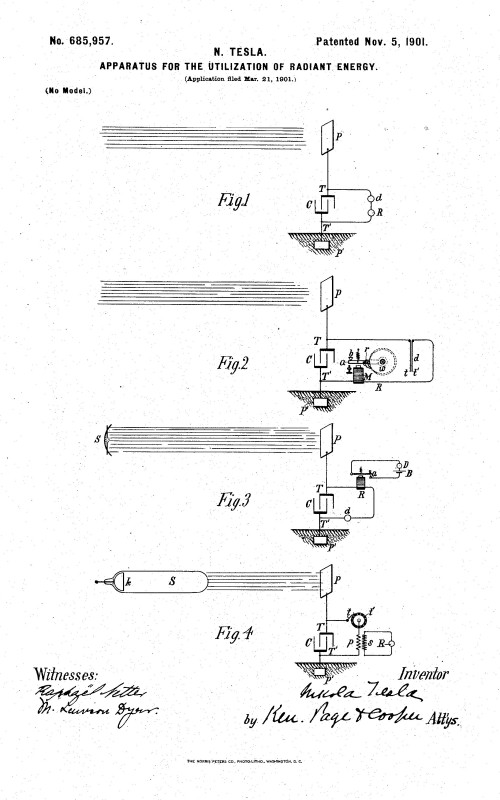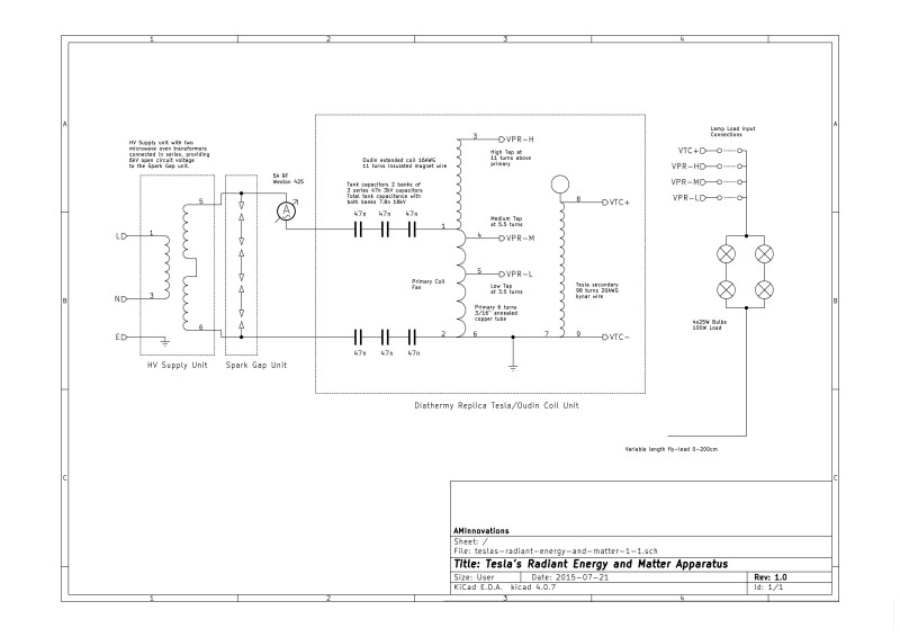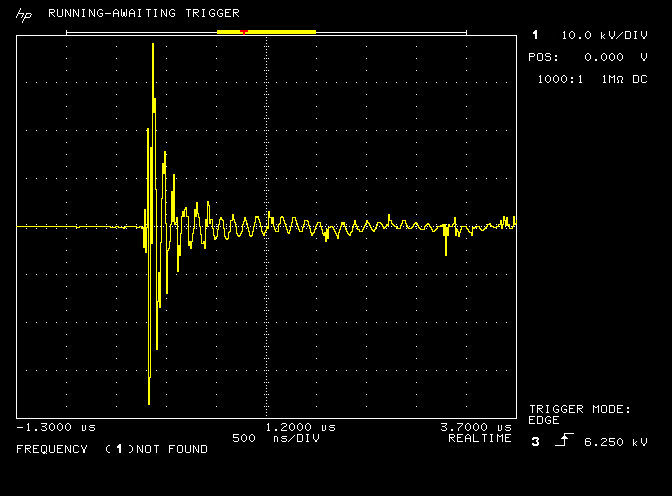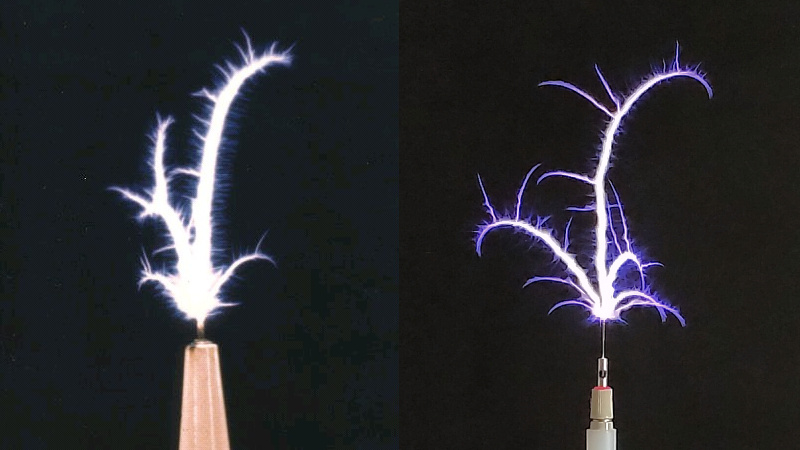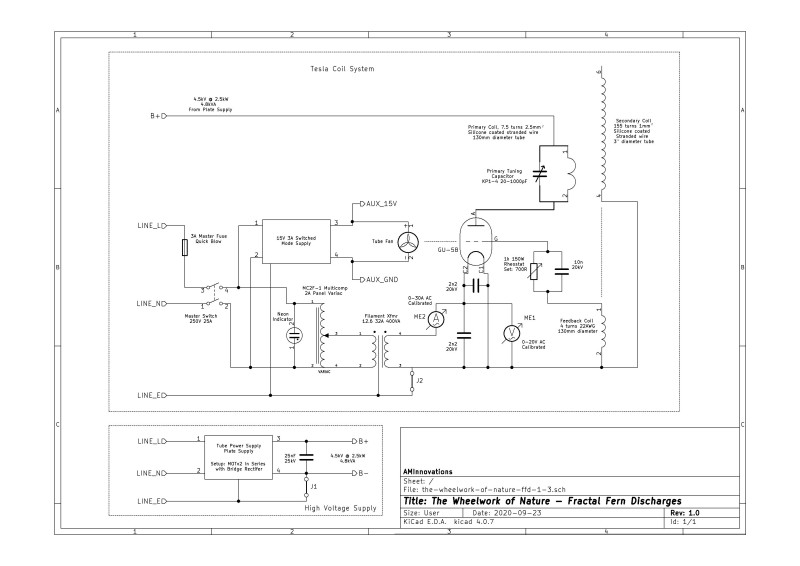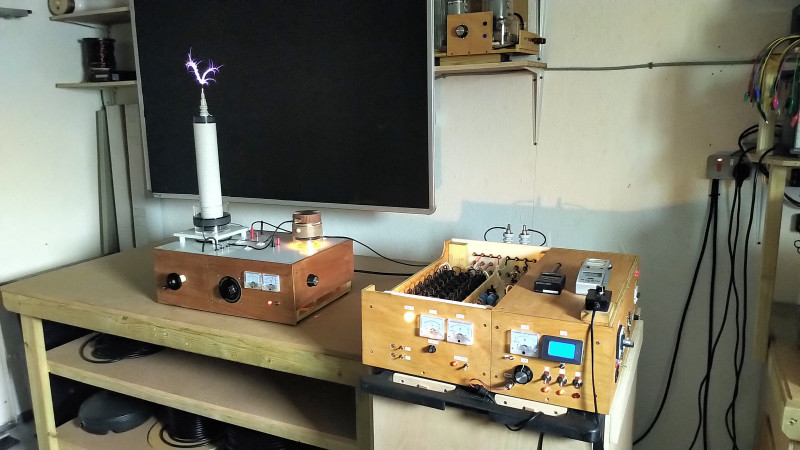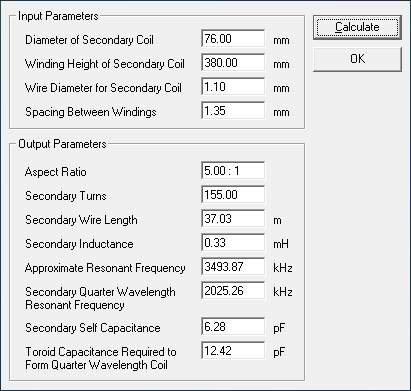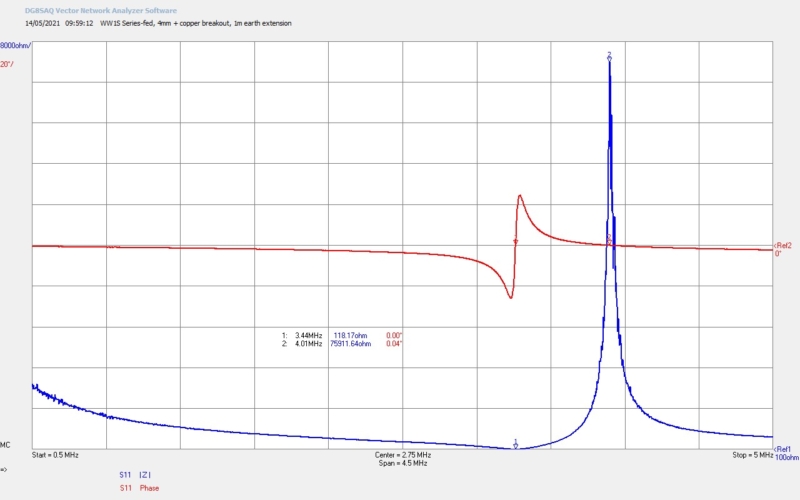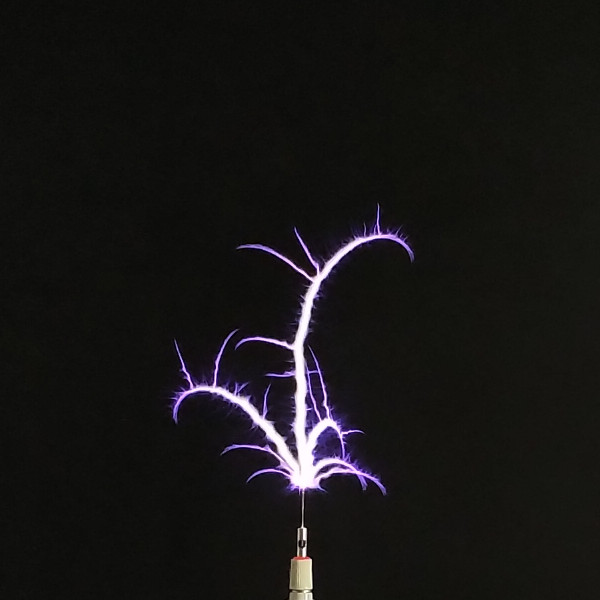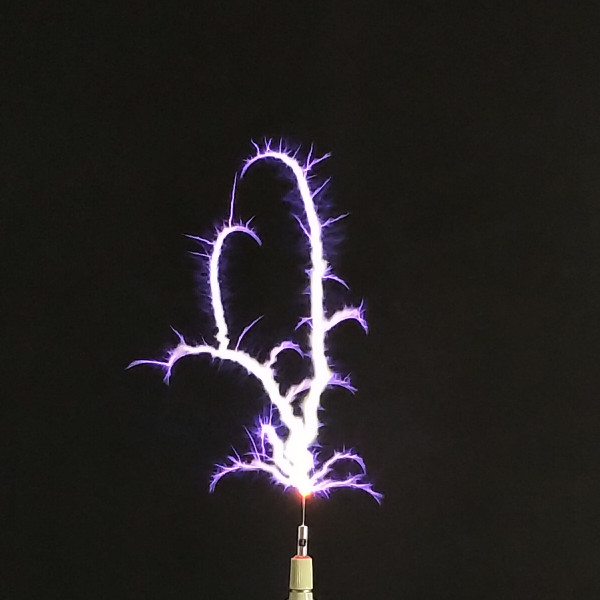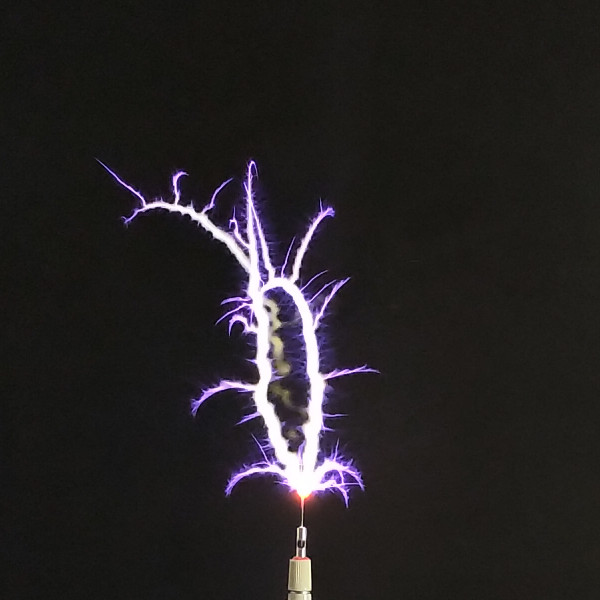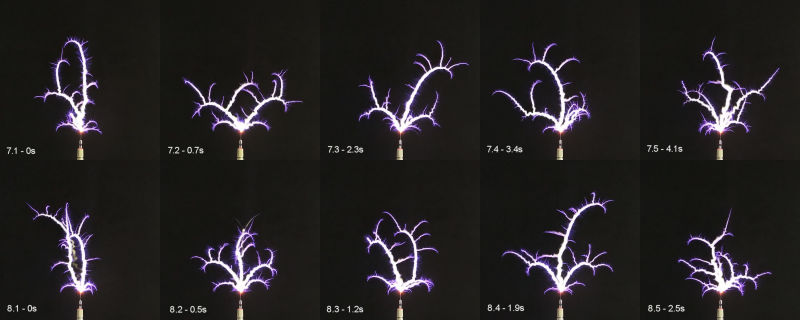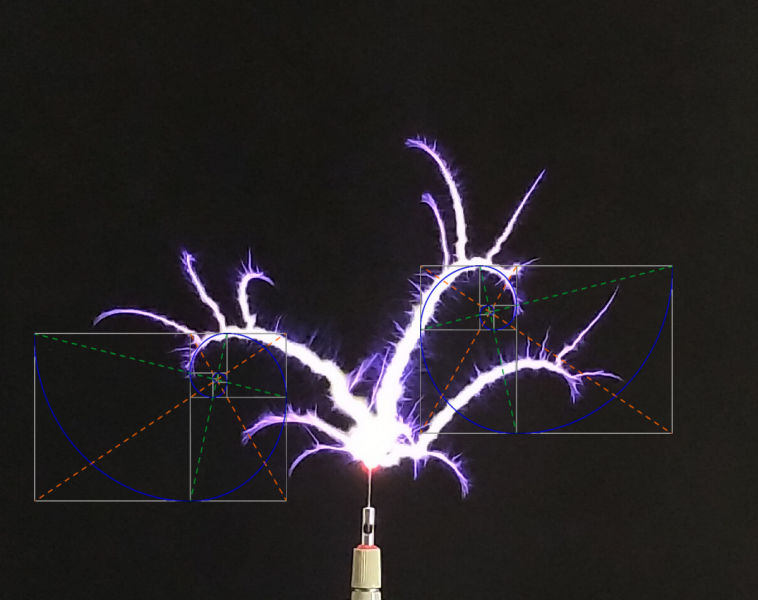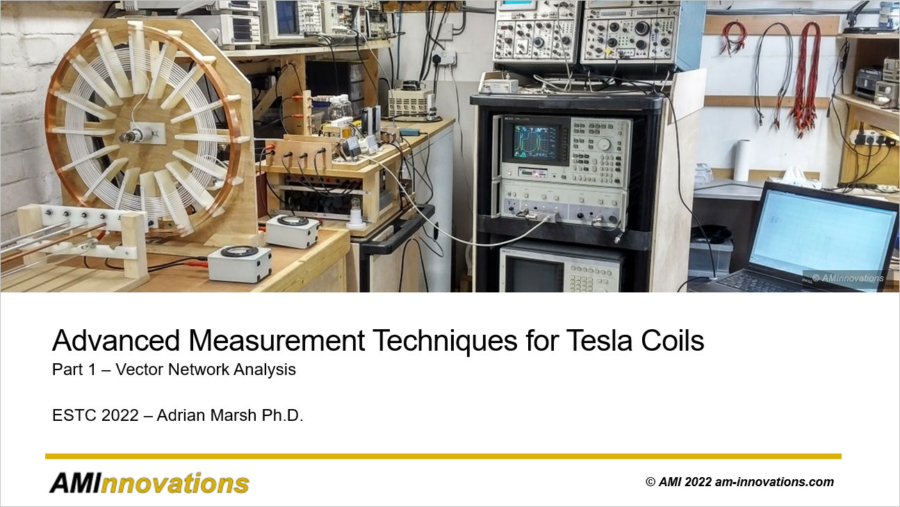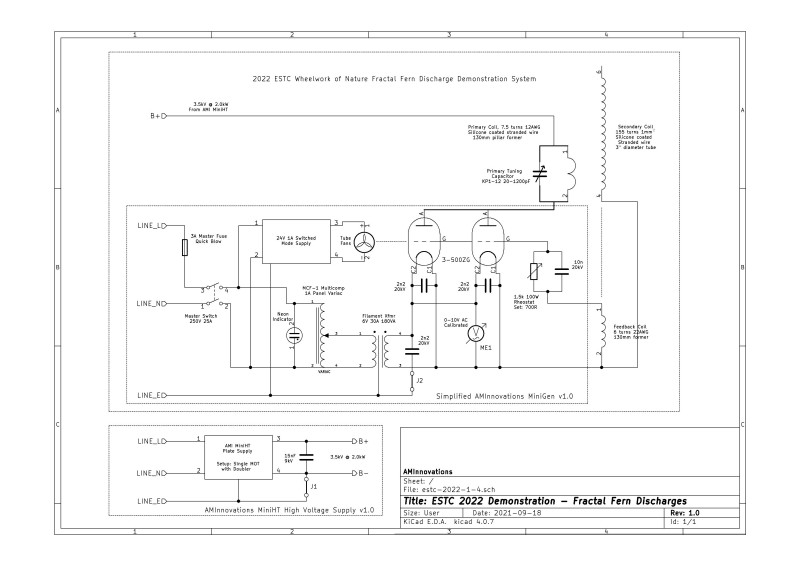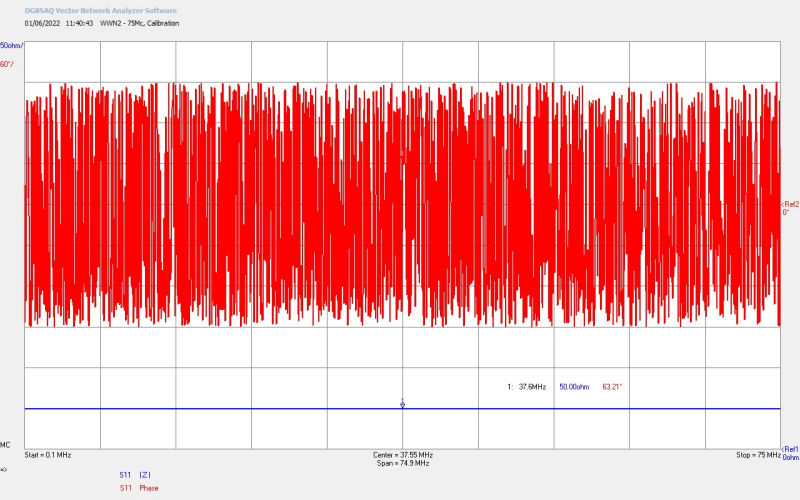Some of the most fascinating areas of research into the inner workings of electricity, are those that display unusual and interesting phenomena, and especially those not easily understood and explained by mainstream science and electromagnetism. The field surrounding Tesla’s radiant energy and matter, the apparatus, experiments, and wealth of unusual electrical, and even non-electrical related phenomena, is a particular case to note. This first post in a sequence serves as a practical and experimental introduction to this area, along with consideration and discussion of the observed phenomena, and possible interpretations as to their origin and cause. It is through working to understand these types of phenomena, often generated in high tension, unipolar, and non-linear electrical systems such as the Tesla coil and TMT transmission system, that the inner workings of electricity can be revealed little by little. That is to say, the outer workings of electromagnetism that account for almost all of those measurable electrical properties that constitute the transference of energy, and hence electric power, between source, load, and the intervening transmission medium, can be peeled back to show a more fundamental, coherent, and guiding mechanism.
This second inner level of electricity’s mechanism and working I consider to be based on the principle of displacement, a coherent and dynamic state extending throughout the common medium, and where the electric and magnetic fields of induction are defined but as yet undifferentiated in their nature. These two undifferentiated facets we can only suppose originate from a yet deeper and hitherto unexplored level of inner workings, where the pressure applied by the one and only force of intent leads to the manifested universe, and all that is both known and unknown.
The differentiation of the electric and magnetic fields of induction lead to the outer manifestation of electricity as we commonly know it, transference, and all the electromagnetic properties and scientific measurements that accompany it, including, for example, the speed of light c in the vacuum, which only currently has a fixed and defined value based on the level it is measured and perceived at. At this outer level of transference, c is measured as a specific value based directly on the inter-action (propagation) of the differentiated electric and magnetic fields of induction. I conjecture that at the next inner level where these fields of induction are defined but not differentiated, that c has not only different measurable quantities, but also comes with qualities and properties that make it a multi-faceted vibration, rather than the simple linear measure of a fixed value.
It should be clear to the reader that in my interpretation of this field of research I see it as not enough to construct experiments, observe phenomena, measure quantities, and then try to fit this to a linear and physical way of thinking about the world, as is the case in mainstream science, and often even in the alternative approaches. I consider progress in this field of research to be a co-operation or union between high-quality science, and a more philosophical or esoteric understanding of the principles and processes of life. Only through new practical knowledge gained through this inclusive approach to life will it be possible to fully reveal, perceive, and utilise the inner workings of progressively deeper levels of electricity.
Such are my conjectures about the inner workings of electricity even at only the next inner level, that as of yet is an unknown mystery to both mainstream science, and the alternative electricity researcher alike. It is for this reason that I find experiments surrounding Tesla’s radiant energy and matter, and associated phenomena, so fascinating, exciting, and awe-inspiring, as they provide an opportunity to progressively take a look “under the hood” at the world of displacement, a hidden world yet to be discovered. A world much more vast in its import and effect than that which we currently observe, understand, and utilise.
In Tesla’s[1] original patent of 1901, No. 685957, he describes his understanding of radiant energy gained from experimentation and observation, and suitable apparatus for utilising this radiant energy:
“My own experiments and observations, however, lead me to conclusions more in accord with the theory heretofore advanced by me that sources of such radiant energy throw off with great velocity minute particles of matter which are strongly electrified, and therefore capable of charging an electrical conductor, or, even if not so, may at any rate discharge an electrified conductor either by carrying off bodily its charge or otherwise.”
“When rays or radiations of the above kind are permitted to fall upon an insulated conducting body connected to one of the terminals of a condenser, while the other terminal of the same is made by independent means to receive or to carry away electricity, a current flows into the condenser so long as the insulated body is exposed to the rays, and under the conditions hereinafter specified an indefinite accumulation of electrical energy in the condenser takes place. This energy after a suitable time interval, during which the rays are allowed to act, may manifest itself in a powerful discharge, which may be utilized for the operation or control of mechanical or electrical devices or rendered useful in many other ways.”
It is clear from Tesla’s own description that he saw radiant energy as a ray or beam-like emanation, that is capable of transferring energy between the emanating source, and a suitably arranged receiver. Under these conditions an electric current could be established when the radiant energy is accumulated in a capacitor and connected to an electric load.
Tesla also states that a suitable time interval is required to allow the rays to generate an action upon the receiver. Tesla conjectures that radiant energy causes minute particle to be thrown of at great velocity, both making a link between radiant energy and matter, and implying that a force can be exerted not only electrically but also physically on a distant body.
In my own experiments into radiant energy I have observed similar phenomena to those described by Tesla including, charging of capacitors from longitudinal wavefronts generated in the single wire cavity of a TMT system, electrical and physical forces exerted on conductors, insulators, and biological specimens placed in proximity to a source of radiant energy emanations, and electric currents and discharges when load circuits are connected to a condenser charged by radiant energy.
The following video introduces the apparatus, experiments, and phenomena that are most often attributed to Tesla’s radiant energy and matter, and which have been successfully demonstrated in the prior art by researchers such as Dollard et al.[2]. The apparatus used in my video can be readily constructed by a competent electrical engineer, showing that experimenting and researching this fascinating area is accessible to any open-minded individual with the fortitude to undertake an experimental path of discovery regarding the inner workings of electricity. The video demonstrates and includes aspects of the following:
1. The difference in powering a load with a conventional closed-circuit from the primary coil of a spark gap generator, and a single wire from the Tesla coil secondary.
2. The change in properties observed in the load in a single wire with load position, generator matching, and changes in the single wire cavity length.
3. The force exerted on different materials as a result of radiant energy/matter emanating from an incandescent lamp emitter in the single wire load.
4. The different responses of materials to radiant energy emanating from the lamp emitter.
5. The radiant matter pressure wave emanating from the lamp emitter, as experienced by the human hand.
6. Discharge “plasma-like” emanations directly from the lamp emitter to the surrounding medium.
7. Vibration and physical movement stimulated in the lamp filaments when radiant energy interacts with another object in the surrounding medium.
8. Cool lamp glass temperature when emanating considerable light from the lamp emitter, a so-called “cold” electricity phenomenon.
9. Radiant energy charging of a capacitor, accompanied by subsequent discharge in a neon lamp load, showing a “cool” white-bluish discharge, and a violent snapping sound.
10. An initial consideration of the inter-relationship between the longitudinal and transverse modes of electricity in the single wire load.
11. The transformation of energy from the longitudinal mode to the transverse, and the dissipation of this energy as power in the single wire load.
Figure 2 below shows the schematic for the generator and experimental apparatus used in the video. The high-resolution version can be viewed by clicking here.
Figure 3 below shows the secondary pulse burst at the single wire load measured using a 40kV high voltage probe whose input terminal is placed closed to the load via a short fly-lead. The fly-lead was initially connected directly to the load but caused some interference and erratic operation to the measurement equipment, as shown in the video. This erratic operation results from transient current spikes induced directly through the probe connections to internal circuitry, and cross-coupled amongst the various earth connections in the equipment line-supply. Individual ferrite chokes can be used on the measurement instrument line supply cables to prevent this undesirable cross-coupling. In this case the fly-lead of the probe was simply disconnected from the load but left in close proximity to the measurement region, which had no detectable impact on the measured results, but sufficiently reduced the unwanted interference to allow for correct instrument operation.
It can be seen from the secondary pulse burst that transients in the single wire during the initial spark discharge are large in amplitude, (up to 40kV in voltage magnitude, and 100s of amps in current magnitude), and resemble impulse-like spikes with very short life-times, densely packed in time, and with very short duty cycles. These transient impulses give rise to both sinusoidal oscillations in the resonant circuit of the secondary, and as expected for a Tesla coil or TMT apparatus, stimulate generation of the characteristic longitudinal wavefronts in the cavity of the secondary circuit. As considered in previous posts, the longitudinal wavefronts themselves could result from the coherent spatial inter-action between the electric and magnetic fields of induction in the LMD mode, and where the coherent aspect is the direct consequence of underlying displacement events.
It is conjectured, and explored here, that high-energy transient impulses, that are ideally unidirectional in nature, and characterised by very large amplitudes and very short life-times, stimulate through non-linear processes electrical events or an imbalance in the system that needs to be, and can only be, rebalanced by the underlying coherent process of displacement. The product of this momentary exposure to displacement, (or an inner-working of electricity), is emission of the rays or beam-like emanations Tesla referred to as radiant energy, which in-turn give rise directly to the unusual electrical phenomena observed in the experiment. It is to be conjectured that the observed radiant energy emanations are directly the consequence of a displacement event taking place in the non-linear dynamics of the local electrical system.
With this conjecture stated the various experimental observations shown in the video will now be considered with the objective of determining their possible source or cause, and in order to get a better qualitative understanding of the underlying principles and processes involved. It should be noted that real experimental results, observations, and perceptions are being conjectured here into a possible underlying explanation, which will need considerable further consideration and experimentation to test, verify, and draw reliable and robust conclusions as to the validity of the considered conjecture.
Transference of electric power in closed and open-circuit systems
The dissipation of power in an “open-circuit” or single wire load is a very characteristic phenomena which can be readily observed and measured in almost any Tesla coil geometry and configuration. A suitable resistive load such as an incandescent lamp can be made to illuminate brightly when connected by a single terminal to either end of the Tesla coil, and the other terminal of the lamp has a small wire extension or fly-lead added. Without this fly-lead the lamp is at the very termination of the single wire and it will not illuminate or dissipate power.
This single wire power dissipation can be observed irrespective of how the Tesla coil primary is energised, whether it be from a sinusoidal linear amplifier or oscillator, a burst discharge from a spark gap, or a pulse generator. In other words, provided the primary and secondary coils are arranged to couple sufficient energy between them it does not matter whether this energy is from a single frequency linear sinusoid, a burst discharge envelope, or a set of non-linear transients, pulses, or impulses, it is possible to dissipate this coupled power within a resistive load placed in the single wire extension of the secondary coil.
It can be seen in the video that the lamp load could not be made to illuminate when connected to output taps on the primary side of the Tesla coil, even on the “HI” Oudin extension terminal. The tension on these primary side terminals is high, about 1kV on the LO, 2-4kV on the MID, and up to almost 10kV on the HI terminal. There is also a wide range of frequencies in the pulse burst due to the spark discharge in the primary circuit, so the output of these primary terminals is certainly a high tension RF burst discharge. This RF burst looks very similar in envelope shape and structure to that measured in the secondary, with the major exception that the oscillation within the burst envelope is dominated by the primary circuit characteristics, whereas in the single wire it is dominated by the secondary coil circuit characteristics.
Given all of this the lamp load will not illuminate and dissipate power when connected by a single wire extension to the primary side terminals, and yet will readily illuminate when connected by a single wire extension to the secondary coil. The only way found to illuminate the load when connected to the primary side terminals is to complete the circuit by connecting the single-wire extension back to the primary ground terminal, making a normal closed-circuit system.
A very similar example to this would be powering an incandescent lamp when placed across the output terminals of an oscillator, or even better in the coaxial transmission line between the output of an amateur radio transmitter tuned to transmit say in the 160m HF band (~2 Mc), and a half-wave dipole antenna at the far end of the coax. When the coax is connected on both terminals (circuit-closed) the lamp will light and dissipate some of the power from the transmitter dependent on the impedance it presents within the circuit, with the remaining power being radiated from the antenna and consumed by the coax. When either terminal of the coax is removed (open-circuit) the lamp will not light and no power is dissipated in either the lamp, or delivered to the antenna.
This most simple, and yet profound difference, between powering a load from the primary and secondary circuits of a Tesla coil, where both coil outputs are high tension and contain considerable RF energy, suggests a fundamentally different mechanism of electrical transmission and/or dissipation of power in the two cases. In the primary the system behaves exactly as one would expect for a conventional electrical circuit, and can be measured and calculated precisely in the case where a linear sinusoid is applied to the circuit. If we reduce all electric circuit characteristics to the inter-dependent relationship of the electric (or dielectric) field of induction (Ψ), and the magnetic field of induction (Φ), and their inter-action with material type, form, and structure, then it should be clear that there is a fundamental difference in the relationship, or mode of inter-action, between these two induction fields within primary circuit and the secondary circuit.
In the closed-circuit case the configuration of Ψ and Φ lead to voltages and currents distributed in time around the circuit that are transverse in nature and where the phase relationship between them is distinctly defined by the impedance elements, (boundary conditions), distributed in the overall system. In this case or mode Ψ and Φ are fully differentiated, non-coherent, not in-phase either spatially or temporally, and only becoming temporally in-phase in the transverse electro-magnetic (TEM) mode for far-field propagation.
In the open-circuit or single wire case and to dissipate power in a load it is necessary for the configuration of Ψ and Φ which are still fully differentiated, to be coherent, that is in-phase spatially and temporally. This can be accomplished through the longitudinal mode, or the LMD mode as it is known, where both Ψ and Φ are locked in phase alignment with each other, and form a combined traversing wavefront within the cavity, generating an electrical pressure wave ahead of the combined wavefront.
In this case local changes of impedance on the single wire, such as the filament of a lamp, lead to power dissipation at the pressure wave through local generation of instantaneous voltages and currents within the impedance change, and hence power dissipation, light, and heat. It can be seen that rms current decays in magnitude along the length of an open-circuit terminated single wire longitudinal cavity, rather than stay constant as would be expected for a transverse mode circuit. With the lamp as the termination of the single wire cavity it will not light as the local current in the wire end has reduced to zero, and no power can be dissipated in the load in the transverse mode.
In summary for now, the most basic Tesla coil presents a fundamentally different power transmission mode at the secondary coil, that is irrespective of how it is energised in the primary circuit, and is most likely longitudinal in nature, and results in the phenomena of single wire transmission of power.
Attractive and repulsive forces
The video shows a range of different materials mounted in a pendulum-like arrangement, that when brought in to close proximity to the single wire lamp load emitter, experience an attractive and in the case of certain materials, an additional repulsive force. The attraction of a material can be almost instantaneous on application of the emitter power, or in some cases can take a period of “charging” time to reach a sufficient level to pull the material towards the surface of the emitter. In most material cases the sample is retained on the surface of the lamp for a period of “discharging” time before being released from the surface after the emitter power is turned off. The responses of the different materials to radiant energy and matter emanations from the lamp are as follows:
Aluminium – attracted towards the emitter over a distance of up to 20mm with an electrical power level at the lamp of ~40W, (power present at the emitter lamp is estimated based on its relative brightness when illuminated at 100% of its nominal rating of 25W). 10mm at ~20W was demonstrated on the video, and this material is readily retained on the emitter surface after power off. No repulsion events were observed with this material.
Copper – both attracted and repulsed from the surface of the lamp at a distance of ~8mm at ~20W. This material is more gently attracted to the emitter but is more unlikely to be retained on the surface. The most observed phenomenon is that the copper in coming into contact with the lamp glass is then repulsed quite strongly from the surface rather than being retained on the surface. The repulsion has a defined force rather than a simple falling-away or bouncing off of the glass surface. The attraction and repulsion at the correct distance from the emitter leads to a sustaining mechanical oscillation of the pendulum.
Acetate (cellulose) – not attracted towards the emitter even at distances <1mm at up to 50W of emitter power. However at much high powers >100W with a different lamp, very small movements have been possible in the region of ~1mm from the lamp surface. Slow to attract over the distance, and very quick to release, implying very low pull force, and very low charging effect.
Biomatter (fresh and dried) – in this case both a fresh and dried leaf sample were strongly attracted to the lamp over a distance up to 20mm at ~20W. This material gives the most instantaneous response to emitter turn-on with very rapid movement to the lamp surface. This material is also barely retained on the lamp glass after emitter turn-off, being almost as quickly released as it is attracted to the surface. No repulsion events were observed with this material.
Cardboard – in this case the cardboard is very old originating from the original inner box of a Weston 425 meter, and showed good attraction up to 5-10mm at ~20W. This material is not retained on the lamp glass after emitter turn-off, and no repulsion events were observed with this material.
Clearly from this experiment it can be seen the emanations from the lamp emitter result in a physical force exerted on the material. This physical force is attractive for all of the materials, including the acetate, but varies very widely in scale based on the material type. Surprisingly the biomatter exhibits the strongest attraction, followed by the metals, all the way down to the insulator with only very small attraction at much higher powers. Only the copper shows a sustained repulsive force but only after an attractive event has first pulled the material to the surface of the glass of the lamp, almost as though an inversion occurs at the surface contact and the material is then repelled away. There is no situation where a material has been repelled away from the lamp at turn-on without first being attracted to the surface.
By studying the nature of the experiment it does at first appear like a “charging” effect. Emanations or wavefronts emitted from the lamp emitter cause negative charge accumulation at the surface of the material, where the degree of surface charging depends on the material type, its “impedance” to the emanations, and the material conductance. If this where the case it would be similar to an electrostatic force where two or more materials are attracted or repelled by the difference in their surface state charge.
It has been suggested[3] that the attractive force is magnetic in nature stemming from eddy currents generated in the material by the incident emanations. I have not so far been able to demonstrate this since the introduction of a strong bar magnet into the experiment makes no difference either attractive or repulsive to the material under test. The material still behaves as indicated above, and at the same power levels and distances, irrespective of the magnets influence on the experiment. However, this is not to say that the magnetic field of induction Φ is not involved in this process. This can also be partly supported by the observed sustained current through a neon lamp load in the capacitor charging part of the experiment, which could suggest that both Ψ and Φ are present within the nature of the radiant energy emanation.
At an empirical level this would appear to make sense, if the radiant energy is an emanation resulting from a displacement event at the emitter, and the displacement event involves the undifferentiated Ψ and Φ acting in temporal and spatial coherence, it would correspond that the emanation from this event is in phase, longitudinal in nature, and forms a forward moving unidirectional wavefront of “electrical pressure”. In this way this emanation conveying both Ψ and Φ when incident on materials within the transmission medium could stimulate an electric, magnetic, or a combination response from the material. This stimulated response may involve energy accumulation and storage, and also dissipation of energy through exertion a physical force, electromagnetic emission or absorption (light and dark), thermodynamic changes (temperature or pressure changes), or even perceptual changes of the surrounding medium.
As a coherent pressure wave its transmission over distance may be very large, transferring energy from the pressure wave to incident materials in the surrounding medium, or even becoming self-sustaining with distance through amplification from suitably arranged material forms and apparatus. The velocity of the pressure wave needs to be considered and suitable apparatus for its measurement arranged, however in the coherent state as an emanation from a displacement event it is considered possible that energy is displaced between source and load at velocities exceeding c the transverse electromagnetic speed of light in the vacuum.
In summary, radiant energy like emanations very similar to Tesla’s original observation in his patent, can be observed from a suitable load, (impedance change), placed in the cavity of a single wire transmission medium. These emanations are conjectured to be the product of coherent underlying processes which stimulate a range of different responses from incident materials. The emanations are conjectured and discussed to be directly the product of displacement events generated by longitudinal electrical pressure imbalance at the single wire load.
Low temperature light emission and “cold” electricity
In Lindemann[4] the term “cold electricity” was used to describe experiments and observations by Gray (via Valentine)[5], based on light emitted by incandescent lamp loads, which was not accompanied by the normal rise in temperature expected from this type of resistive load, but rather the lamp had a cool glass surface when emitting “full power” illumination. Gray further demonstrated this by illuminating to full power an incandescent lamp submerged in cold water, which would ordinarily lead to fracture of the lamp glass. In the case of illumination by “cold electricity” no such fracture damaged was observed over sustained illumination periods.
In my experiment with incandescent lamps in the single wire load it was observed that the temperature of the lamp was quite low, and could comfortably be touched or held by the human hand after sustained illumination, equivalent to illumination at a full input power of 25W. This was compared to a control lamp, (same 25W pygmy make and style), powered from the normal line supply. After the same period of illumination where both lamps appeared the same brightness, the lamp in the single wire could be easily touched and held, whereas the control lamp was too hot to touch without causing a burn to the skin.
It appears likely from this experiment that the light being observed in the single wire lamp is, at least in part, emitted by a different process than the control lamp. Continuing the consideration from the previous section, and looking at the response of different materials to radiant energy emanations, it is possible to imagine that the filament of the bulb as a material that radiant energy is impinging upon, has its own unique and specific response to the coherent pressure wave emanation. In this case the response of the material to the radiant energy is to emit electromagnetic radiation in the form of light, which was not entirely generated by the resistive heating of the filament from the electrical current flowing in the single wire.
In a normal transverse and closed electric circuit case an incandescent lamp will generate light as emission from a resistive heated filament, where the colour temperature of the light is based on the filament material and temperature. Heat from radiation and conduction through the gas in the lamp heats the outer lamp glass to a temperature more than sufficient to cause sustained burns to biomatter. In the single wire lamp load light appears to be emitted through the filament response to the coherent longitudinal wavefront, which does not result entirely from resistive heating of the filament. Since the lamp does warm a little there is most likely a combination of processes going on, so some light emanation from radiant energy coherent processes, and some transverse current resistive heating in the filament.
This implies that there is a combination of the longitudinal and transverse electrical transmission modes within the single wire. It follows that improvement of the experimental system and boundary conditions could lead to a reduced transverse component, and a more pure longitudinal pressure wave in the single wire cavity reducing the heat emitted from the load to a level comparable to that observed by Gray in his experiments. In this case we would expect the temperature of the single wire lamp load to reduce from slightly warm to very cool, or even to cold in optimal experimental conditions and apparatus. Optimal conditions here means firstly reducing the transverse components within the single wire, which implies establishing the stable balance of Ψ and Φ boundary conditions in the complete system across the generator, primary, secondary, and cavity. And secondly it requires an increase to the uni-directional impulse like nature of the stimulus, where the increased non-linear inter-action between Ψ and Φ results in more displacement events and hence stronger emanations from the emitter.
In summary, it is considered that radiant energy emanations on the filament result in emission of light which is in part not as a result of resistive heating of the filament, which shows a similar result to that reported by Gray and considered by Lindemann. Improvements to the experimental apparatus and operating conditions should result in an increase in this phenomena, and will also help to confirm the validity of the conjectures made regarding displacement and radiant energy. It should be noted here that whilst I understand the label of “cold electricity” given to this phenomena, I find that the process conjectured here as being responsible for this phenomena is definitely not a “cold” principle. “Cold” in these terms implies the absence of something or something separated, in this case the energy to elevate the temperature through transverse dissipation, whereas I consider the emission of radiant energy, and the filament material response to that emission, to be an inclusive process which involves the coherent inter-action of both Ψ and Φ. Thus phenomena and emanations resulting from displacement are inclusive in nature, involve all parts of the system and medium in dynamic balance, and imply a sense of warmth, wholeness, and completeness.
Radiant energy accumulation and charge storage
In this experiment a capacitor is electrically charged by radiant energy emanations, showing energy transferred from the single wire emitter, accumulated in the capacitor, and then discharged through a neon bulb in the form of a spark discharge. In many ways this a similar consideration to the section on attractive and repulsive force, only additional accumulation can occur due to the capacity and storage of energy on the capacitor, which persists for much longer time intervals after the radiant energy emitter has been turned off.
An interesting observation to note from this experiment is that during the “charging” of the capacitor a smaller single wire circuit, or tributary from the main cavity, is created in the form of the capacitor in close proximity to but not touching the lamp, a wire connected to the other terminal of the capacitor, and a neon lamp load connected to the end of this wire. The active region of the neon lamp appears in the cavity tributary where there is also a short lead out of the neon lamp acting as the short fly-lead at the end of the single wire cavity, and ensuring there is a small but non-zero single wire current in neon load. During the charging stage the neon bulb lights continuously showing a single current flow down the tributary, and the transient like nature of the accumulating tension on the capacitor.
When the capacitor is adequately charged the main single wire load emitter can be turned off, and the charged capacitor and tributary circuit removed from the vicinity of the main experiment. The charge of the capacitor is retained over considerable time without any part of the circuit being closed with the neon bulb. When the circuit is closed the stored energy discharges rapidly through the neon bulb, with a characteristic snapping sound, and a bright bluish white discharge light in the neon bulb. The nature of this spark discharge shows that there is considerable tension on the capacitor, in fact it can be measured using a high voltage probe to be up to ~10kV, and considerably more than the maximum rating of the capacitor, (in this case 4kV). Unusually the capacitor appears unaffected by application of this overall tension across its terminals, and can provide a rapid and high-current discharge through the neon bulb.
In summary, energy can be stored in a tributary single wire circuit incorporating a capacitor as an accumulator, when a radiant energy pressure wave is incident on one terminal of the capacitor. The experimental arrangement used with the load attached by single wire to the other terminal of the capacitor, and kept open-circuit during charging demonstrates the possibility of the formation of single wire tributary cavities, which extend off the main cavity. In some ways this is similar in analogy to the “fern” discharge effect demonstrated by Dollard[6], when exploring extra-coil discharge phenomena with a pair of cylindrical phase-locked TMTs.
Radiant matter pressure on biomatter and reaction forces
In this experiment I placed my fingers close to and around the single wire lamp emitter but not touching, and not close enough for a high tension discharge to occur between the filament and my fingers. It was clear to experience a vibrating pressure exerted on my fingers in similar accordance to Tesla’s observation that “… sources of such radiant energy throw off with great velocity minute particles of matter …”, Tesla[1]. This radiant matter appeared to exert pressure on my fingers, or at least the experience of pressure waves as if being struck by waves of minute particles.
In addition to this I observed, and can be seen on the video, a reactionary force exerted on the filaments of the lamp emitter so that they would move permanently into another position, or else oscillated around a median position until filament breakage or becoming stuck to the inside surface of the lamp glass. Either way the movement of my fingers around the glass of the lamp resulted in both the experience of an exerted physical force on them, and simultaneously a reactionary force exerted on the filaments.
Although Tesla was clear about the nature of these “great velocity minute particles of matter”, I am not convinced of this explanation in this experiment, but rather that the experience is similar to that observed in the section on attractive and repulsive forces, where both Ψ and Φ are coherently inter-acting to form an emanation where again the stimulated response may involve energy accumulation and storage, and also dissipation of energy through exertion of a physical force, electromagnetic emission or absorption (light and dark), thermodynamic changes (temperature or pressure changes), or even perceptual changes of the surrounding medium.
Longitudinal and transverse mode coupling, or transformation, in a single wire cavity
This is a complex topic but one that needs to be initially considered here if we are to move toward a proper understanding as to the principles of transmission that take place in a single wire conductor, its relationship to the transverse and longitudinal mode, and ultimately the underlying stimuli and inner workings of electricity, displacement, and radiant energy.
In experiments and discussions thus far the Tesla coil or TMT system has been considered to form a cavity in the secondary circuit, where single wire transmission medium phenomena can be easily observed and measured. It has been suggested by others[2,3] and conjectured by myself that the single wire open-circuit nature of these phenomena, is a result of the longitudinal mode of transmission in the cavity created within the TMT system, where both Ψ and Φ are coherently locked in phase, creating an electrical pressure wavefront that traverses the cavity between boundaries, being reinforced by successive oscillations from the primary, and either transferring the power to a distant load in the primary of a receiver, or dissipating the energy in the wavefront within a load of different impedance within the single wire cavity.
The frequency of this longitudinal mode is expected to be different from the transverse resonant frequency of the Tesla coil secondaries for both the transmitter and receiver coil in a matched and tuned TMT transmission system. Whilst impedance measurements on a TMT with a vector network analyser, reveal in minute detail the transverse mode inter-action of the various resonant circuits making up the overall system, it appears to show nothing of the properties of the longitudinal mode which lay outside of its measurement paradigm. The concept of a longitudinal wavefront where both Ψ and Φ are temporally and spatially in phase does not currently exist in modern electromagnetism, and there is not an instrument currently available for probing this mode and condition.
Still the question stands of how it is possible to dissipate power in a single wire load in a longitudinal cavity. To start to address this we must consider the coupling between modes in the local impedance change of the load. Whilst the longitudinal mode of transmission dominates in the single wire cavity, energy and hence power can be transferred to distant loads, with in principle very low loss. To dissipate as power in the single wire load, rather than transfer the energy in the longitudinal mode, a coupling or transformation to the transverse mode must occur, generating local voltage potential difference and local currents in the load, which in turn are consumed as power in the resistive load, such as the filament of an incandescent lamp. I conjecture that it is this transformation process between modes that is characteristics of a single wire transmission medium, and allows for loads to be powered in an open-circuit condition, something that would not be possible in classical electric circuit theory or practice.
Radiant energy as emission from a displacement event
Further to this transformation between the longitudinal and transverse modes in the open-circuit single wire conduction model, it is conjectured and to be explored as a central concern in this research that as the TMT system becomes more non-linear, and when properly arranged to be stimulated with high-power impulse transients, displacement events required to rebalance the local Ψ and Φ dynamics of the system give rise to radiant energy emanations. These emanations result in many of the observed phenomena presented in this post, and when properly arranged in timing, amplitude, and duration lead to a very wide range of perceptual phenomena that are both electrical and non-electrical in nature, and yet to be explored.
So it is maintained and to be explored that the ideal TMT system is one that is carefully balanced, matched, and tuned between the “transmitter” and “receiver” coils both for the longitudinal and transverse modes, such that the single wire transmission medium forms a low impedance, reciprocal, and high Q cavity, where Ψ and Φ are dynamically balanced and in equilibrium for the linear case. This ideal TMT system when subsequently powered by a highly non-linear, uni-directional, transient impulse generator of very high tension, will cause such large discontinuities in the local balance of Ψ and Φ that displacement, as an underlying guiding mechanism in the inner workings of electricity, will be called-forth to re-balance the local dynamics of the electrical system.
These displacement events generate emanations, or electrically based shock waves, that are themselves longitudinal in nature, where both Ψ and Φ are coherently locked in phase, creating an electrical pressure wavefront that emanates outwards from the primary event. the stimulated response of materials and forms which encounter the incident wavefronts may involve energy accumulation and storage, but also dissipation of energy through exertion of a physical forces, electromagnetic emission or absorption (light and dark), thermodynamic changes (temperature or pressure changes), or even perceptual changes of the surrounding medium.
The creation of such an experimental system to test these assertions on displacement and transference, transformation of the longitudinal and transverse modes, and transmission of electric power to distant loads with very low loss, represents a challenge equivalent to surmounting a mountain higher than the highest yet ascended.
Summary of the results and conclusions so far
In this post we have experimentally observed a wide range of phenomena that are usually attributed to those related to Tesla’s radiant energy and matter, and which have also been demonstrated and observed by other significant research efforts, including Dollard et al.[2]. It is clear from the experiments and observations that improvements to the TMT experimental system will facilitate a far more detailed and clear exploration of the underlying principles involved.
In considering the unusual observations of the experiment, and the accumulated understanding of the prior art through both my own collective work presented so far, and that of significant others[1-8], I have formulated a line of conjecture which combines both a philosophical and scientific approach towards the origin or source of these phenomena, and how that source could give rise, through fundamental principles and processes, to the materially observed effects of said experiments.
The formulated line of conjecture has the following key points:
1. The underlying origin or source of these phenomena resides in the inner workings of nature that, at the deepest conceivable level, is the result of the pressure of life’s intent, which in turn gives rise to the need for the natural and living world to evolve.
2. The inner workings of electricity, as a part of the inner natural world, includes the undifferentiated fields of electric and magnetic induction Ψ and Φ, which act as one together in a fully inclusive manner, and which I refer to as displacement Q. Dollard[8] refers to a similar principle Q as the Plank, or total electrification, which for me reflects the same inner workings of electricity.
3. A displacement event is not normally observable in the differentiated dynamics of Ψ and Φ. This differentiation between Ψ and Φ, and all the implications of their temporal and spatial inter-action results in what science currently understands as the field of electromagnetism, and gives rise to all the phenomena that I refer to as transference.
4. A severe imbalance created between Ψ and Φ in a circuit system where the “need” or purpose of the circuit is clearly stated, and where equilibrium cannot be re-established through the process of transference, will call-forth the underlying guiding principle of displacement. The act of displacement coherently puts the differentiated Ψ and Φ into their proper temporal and spatial alignment, upon where transference can resume as the external and observable dynamics of electricity.
5. The result of a displacement event is to generate an emanation or shock-wave, which Tesla called radiant energy, that permeates the medium surrounding the displacement event, and extending out until all emanation energy is stored or dissipated by external transference of electric power.
6. The radiant energy emanation is a direct consequence and extension of the displacement principle, and equivalent to bursts of energy or electrification injected into the surrounding medium. Suitable collection or reception of this emanation, when introduced to a load suitable to balance the overall system, will make it possible to harvest this additional electrical energy for suitable means, provided the overall balance of the complete system and medium is not violated. This is similar to what Tesla[7] referred to “… it is a mere question of time when men will succeed in attaching their machinery to the very wheelwork of nature”.
7. The radiant energy emanation where both Ψ and Φ are coherently inter-acting leads to stimulated responses from material and forms in the surrounding medium, where the stimulated response may involve energy accumulation and storage, and also dissipation of energy through exertion of a physical force, electromagnetic emission or absorption (light and dark), thermodynamic changes (temperature or pressure changes), or even perceptual changes of the surrounding medium.
8. The extension of radiant energy into the surrounding medium, and when incident on another open single wire circuit with established purpose, will constitute a tributary event, and transferring the same electrical event properties to the tributary, where the quantity of transferred energy is equivalent to the load or need of the tributary circuit.
9. The overall balance and natural order of the electrical system will be maintained through the inner workings of electricity and the principle of displacement, and can be observed and experimented with. Ultimately the energy generated through displacement can be utilised where the natural order and balance is preserved by the utilisation. This is equivalent to where the load represents a need that is inclusive to the system, then the system becomes regenerative, and can self-sustain with energy being supplied to all loads in balance.
This post has opened and exposed many further questions surrounding all of the observed phenomena, the need for much more measurement detail, further design of a more optimal experimental system, and most importantly the verification, or otherwise, of each and every one of the conjectures made to explain and understand what might be the source and mechanism behind Tesla’s radiant energy and matter.
In the next post in this series I will be take a look at improvements to the TMT experimental apparatus that may lead to more detailed and clearly defined measurements to support aspects of the formulated line of conjecture.
1. Tesla, N., Apparatus for the utilization of radiant energy, US Patent US685957, Nov. 5, 1901.
2. Dollard, E. & Lindemann, P. & Brown, T., Tesla’s Longitudinal Electricity, Borderland Sciences Video, 1987.
3. Dollard, E. and Energetic Forum Members, Energetic Forum, 2008 onwards.
4. Lindemann, P., The free energy secrets of cold electricity, Clear Tech, Inc., 1st Ed, 2001.
5. Valentine, T., Man creates engine that consumes no fuel, The National Tattler, July 1, 1973.
6. Dollard, E., Etheric discharge from Eric Dollard’s tesla magnifying transmitter, Integratron, Summer 1986.
7. Tesla, N., Experiments with alternate currents of high potential and high frequency, Address to the Institution of Electrical Engineers, London, Feb. 1892.
8. Dollard, E., A common language for electrical engineering – lone pine writings, A&P Electronic Media, 2013.



